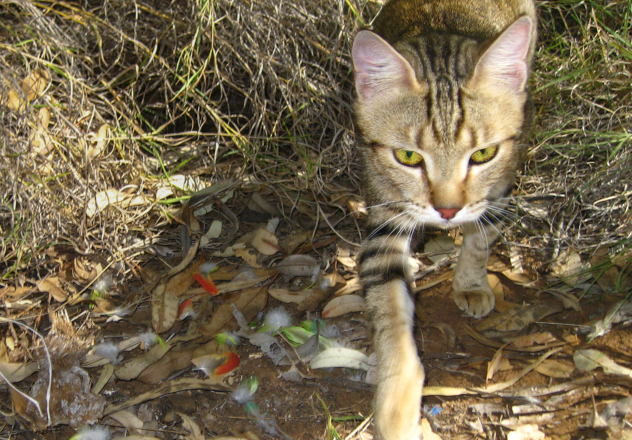The Dusky Hopping Mouse (Notomys fuscus) is a small, desert rodent with large ears, dark eyes and a long, bushy tail. It is distinguished from other mice by a well-developed throat patch found in both sexes. It has been described as one of Australia’s most attractive rodents (Watts and Aslin 1981).

 Daniel Burton/AWC
Daniel Burton/AWC
The Dusky Hopping Mouse is a confirmed species for two AWC sanctuaries: Kalamurina Wildlife Sanctuary in South Australia and Scotia Wildlife Sanctuary in New South Wales. The population at Scotia Wildlife Sanctuary was confirmed in May 2023, one year after an opportunistic sighting of a single individual 10 metres outside the sanctuary’s 8,000 hectare feral predator-free fenced area.
Following the sighting, ecologists spent up to three months checking camera traps and opportunistically using Elliott Traps to capture one individual for genetic testing. In May 2023, results of the genetic testing confirmed the individual as a Dusky Hopping Mouse. AWC has since confirmed multiple sightings inside and outside the fenced area.
The discovery confirmed a significant expansion of the species’ range by more than 100 kilometres south of where the species has been recorded in Broken Hill, NSW. The significant range expansion followed two years of above-average and consistent rainfall in the Murray-Darling basin.
 © AWC
© AWC
Ranging from 80-115 millimetres long (excluding the tail) and weighing as little as 35 grams, the Dusky Hopping Mouse is easy prey to introduced predators such as cats and foxes, as well as native ones such as the Barn Owl which frequently consume the species.
In addition to falling victim to predators, the species competes for food and habitat with the house mouse which can deplete resources during favourable (wet) conditions, and the rabbit.
 W Lawler/AWC
W Lawler/AWC
Ecology
The Dusky Hopping Mouse prefers the desert environment and can be found living in sand dunes and ridges in the Simpson Strzelecki Dunefield Bioregion of Queensland, South Australia and New South Wales.
Range and Abundance
The Dusky Hopping Mouse once inhabited areas Queensland, New South Wales, the Northern Territory and South Australia. It is considered vulnerable nationally, endangered in Queensland and New South Wales and presumed extinct in the Northern Territory. The species hasn’t been recorded in the NT since 1939.
The mouse was believed to be extinct in New South Wales until 2003, when a population was discovered in Sturt National Park in the north west corner of the state. Since then, sightings of the Dusky Hopping Mouse have been reported near Broken Hill and an individual was captured on Sturts Meadow Station in November 2010. Broken Hill was considered the southernmost location for the species in NSW until May 2023, when AWC’s field team opportunistically encountered the mouse at Scotia Wildlife Sanctuary in the Murray-Darling basin, more than 100 km outside their known range.
Donate to help protect the Dusky Hopping Mouse and other endangered species from extinction
Donate NowKalamurina protects a vast area of desert in the heart of Australia, on the shores of Kati Thanda-Lake Eyre. It...
“Scotia Wildlife Sanctuary … a vitally important project for Australia and for the planet.” – Sir David Attenborough Scotia Wildlife...
AWC has formed a partnership with the Queensland Government to help conserve this species and establish new populations.
The Scaly-tailed Possum is one of only three species of possum that shelter exclusively in rocks.
Sharman’s Rock-wallaby is considered threatened because of its restricted distribution and their vulnerability to feral predators.